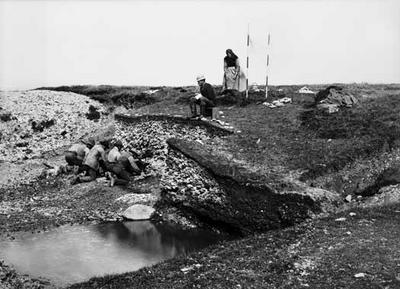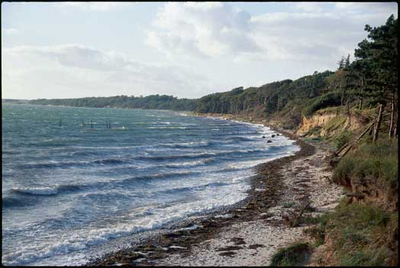Coastal settlements
The Ertebølle period’s hunters preferred to live close to the coast in the summer months. Their settlements often lay close to where streams met the sea and food supplies were varied and plentiful. On the coast we find their large rubbish dumps of piled-up oyster shells and other household waste, the so-called “kitchen middens”.
In addition to shellfish collecting, fishing was an important occupation. Some fish were caught close to the coast using spears, traps and long fish weirs. In open water people fished for cod with hook and line. Larger animals like seals and small whales were hunted, and for this the dugout boats were indispensable. Many of the prehistoric dugouts show traces of fires, which were placed upon a plate of clay and sand in the stern of the vessel. The clay plate prevented the fire from burning down into the wood of the boat. Fishermen probably used fires to attract eels during fishing expeditions at night.

